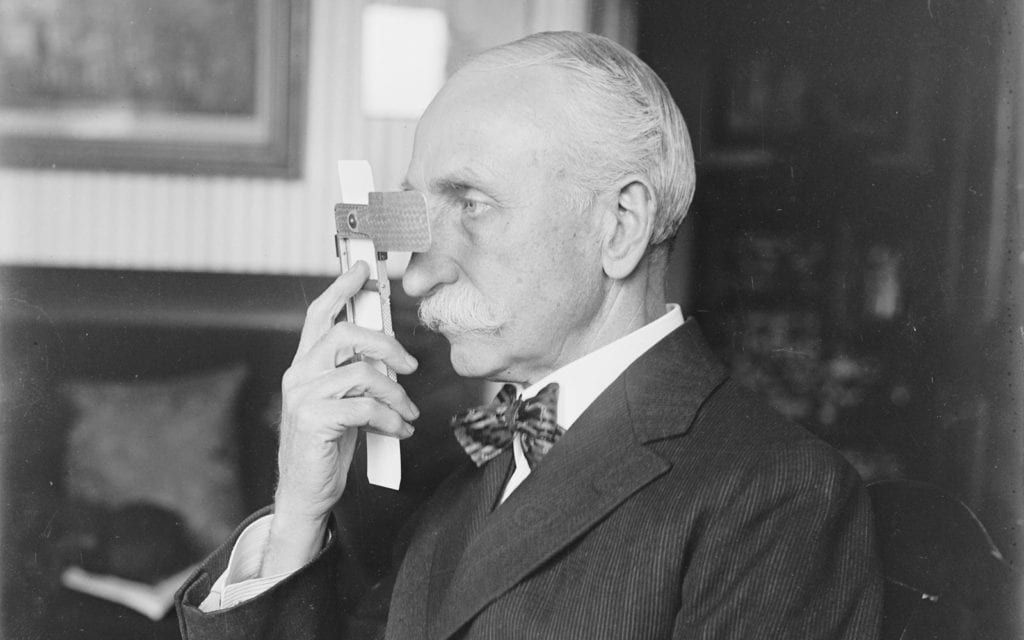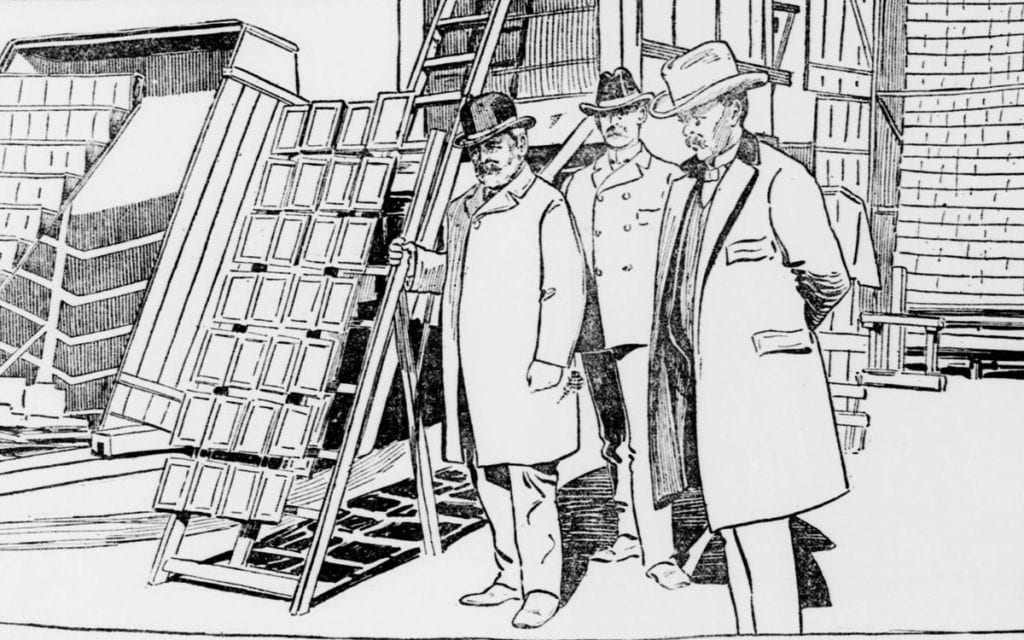 Animals
Animals  Animals
Animals  Weird Stuff
Weird Stuff 10 Weird Things People Used to Do at New Year’s
 Our World
Our World 10 Archaeological Discoveries of 2025 That Refined History
 Weird Stuff
Weird Stuff 10 Fascinating Facts You Might Not Know About Snow
 Miscellaneous
Miscellaneous Top 10 Things Crypto Was Supposed to Change & What Actually Did
 History
History 10 Huge Historical Events That Happened on Christmas Eve
 Music
Music 10 Surprising Origin Stories of Your Favorite Holiday Songs
 History
History 10 Less Than Jolly Events That Occurred on December 25
 Weird Stuff
Weird Stuff 10 Funny Ways That Researchers Overthink Christmas
 Politics
Politics 10 Political Scandals That Sent Crowds Into the Streets
 Animals
Animals 10 Species That Refused to Go Extinct
 Weird Stuff
Weird Stuff 10 Weird Things People Used to Do at New Year’s
 Our World
Our World 10 Archaeological Discoveries of 2025 That Refined History
Who's Behind Listverse?

Jamie Frater
Head Editor
Jamie founded Listverse due to an insatiable desire to share fascinating, obscure, and bizarre facts. He has been a guest speaker on numerous national radio and television stations and is a five time published author.
More About Us Weird Stuff
Weird Stuff 10 Fascinating Facts You Might Not Know About Snow
 Miscellaneous
Miscellaneous Top 10 Things Crypto Was Supposed to Change & What Actually Did
 History
History 10 Huge Historical Events That Happened on Christmas Eve
 Music
Music 10 Surprising Origin Stories of Your Favorite Holiday Songs
 History
History 10 Less Than Jolly Events That Occurred on December 25
 Weird Stuff
Weird Stuff 10 Funny Ways That Researchers Overthink Christmas
 Politics
Politics 10 Political Scandals That Sent Crowds Into the Streets
Top 10 Tech Crazes That Failed To Change The World
Every once in a while, someone comes along with the world’s greatest invention — or so they say. New devices come about all the time, but few have the societal impact of actually changing the world.
Most new inventions offer a slight improvement on previous designs, or they might even offer something unique. Still, changing the world with a single invention is rare, and not every new thing is going to be the next radio, television, or Internet.
These ten devices made such a claim, but despite being praised upon their introduction to the world, they completely failed to change it.
10 Dangerous Misconceptions About Nuclear Technology
10 Flying Tanks
Believe it or not, there was once a time when people thought it was a good idea to strap a couple of wings to an armored tank and use it in combat. Flying tanks were designed to take the firepower of armored combat and combine it with the tactical use of airpower, but as you probably can guess, it didn’t exactly work.
Essentially, these were glider wings attached to tanks, and they could be towed or carried beneath an airplane. They would then be released and glide into combat to support infantry operations on the battlefield. They were marginally effective, but various projects never achieved much success.
Instead of changing the way humanity fights in war, the concept was scrapped shortly after World War II, though the Soviet Union continued developing the concept well into the 1970s.
While flying tanks have become a thing of the past, they’ve largely been replaced by modern technology. The AC-130 Gunship is loaded with equipment and weaponry that makes tanks look like toys. They carry 25mm or 40mm Gatling guns and a 105mm cannon, which effectively makes them far superior to a tank with wings.[1]
9 Videophones
Long before the invention of the television, people imagined a world in which they could engage in a telephone conversation while seeing the person they were speaking to on the other end. Because of this, the technology to do exactly that was developed at great cost for a consumer market that had been imagining videophones for decades.
By the time such a product was made available, it was far too expensive, and few could afford it. The first devices cost $1,500 for a single phone, and the service cost nearly $100 a month, making it unaffordable for consumers and an iffy purchase for companies.
By the turn of the millennium, companies were still working hard to transmit video communications over telephone lines, but the technology was still expensive and difficult to perfect. This ultimately led to an overall abandonment of dedicated videotelephony over phone lines.
In its place came different video teleconferencing means, using data networks and the Internet to make calls. Today, people use apps to communicate, but while the technology is more than available for anyone who wants to use it, most people don’t bother to appear to the person they communicate with, preferring instead to text, email, or make a simple call.
Video calls have been around for a while now, but they’ve hardly managed to change the world. People still do business over voice communications far more than the video alternative, and it’s unlikely that will change.[2]
8 The Fiske Reading Machine

Bradley Allen Fiske created numerous inventions throughout his life. Of course, not every one of them was as well thought out as his telescopic sight for naval guns. One such invention, the Fiske Reading Machine, sought to change the way the world digested information, but it failed to catch on with the world’s readers.
The idea was to take a small handheld device with a magnifying lens for one eye and a shield masking the other. Text was minituarized using photo-engraving techniques, and printed onto cards measuring roughly six by two inches. This was impossible to read using the naked eye.
Using the device, a person could look through the lens and read everything printed onto the card. The idea was to reduce the need for paper, create a new pocket-sized means of reading, and literally change the way people consumed text.
To demonstrate his invention, he condensed Mark Twain’s The Innocents Abroad onto 13 cards. He believed he single-handedly revolutionized the publishing industry, but if this is the first time you’ve heard of his invention, you know he didn’t. It wasn’t necessarily a bad idea, but it wasn’t how people wanted to read books, and the Fiske Reading Machine never made it to mass production.[3]
7 Cryptocurrencies

The world’s first cryptocurrency was the Bitcoin. When it was first created in 2008 (by an unknown person or group), it looked as if it might be a world-changing invention. Cryptocurrencies are forms of digital currency that exist without a central bank or administrator.
They are relatively complex, and they can be “mined” using sophisticated graphics chips that use their processing power to create new blocks in a consistent blockchain. Essentially, they crunch numbers and slowly create new Bitcoins.
In the beginning, Bitcoins weren’t worth very much real-world money, but by 2016, their value shot up to $2,900, and within five years, they peaked in value at $19,511, though that value quickly crashed.
Cryptocurrencies theoretically could change the way people conduct international business. Still, the anonymous nature of mining and spending them has really only benefited criminal organizations.
Even though it is a decentralized monetary system, it’s still susceptible to the same problems as a traditional currency, including counterfeiting, market manipulation, and more. Cryptocurrencies are still around, and there are many more than just Bitcoin. Still, it’s unlikely to change international monetary systems for a myriad of reasons.[4]
6 Daylight Motion Pictures

When you go to the movies, you find yourself sitting in a large theater, and the only significant source of light is the powerful lamp in the projector. That light is reflected off the screen, and it works best when there are no other sources of light — turning one on would wash out the image, making it harder to see.
Despite this fact, there was a time when people thought it best to watch movies in the daylight out of a need for security. In 1910, that’s exactly what some people tried to do with “daylight motion pictures.” It was a trend that raced around the United States, and it spread like wildfire.
The concept utilized darker screens, brighter and stronger projectors, and the misapprehension that movies needed to be enjoyed in the full light of day. California even passed a law stipulating that movie theaters were required to sufficiently illuminate their theaters so that patrons could see one another.
Of course, the craze didn’t last for very long. Projectionists complained that movies didn’t look good in well-lit rooms. Various other problems caused Daylight Motion Pictures to become a thing of the past, ultimately changing nothing as darkened theaters returned.[5]
10 Unconventional Uses Of Nanotechnology
5 The Helio-Motor

In 1900, Dr. William Calver created a device he called the Helio-Motor, which he believed would revolutionize the energy industry. He was inspired by the legend of Archimedes’ heat ray. He created a device to utilize the sun’s energy to be used in other applications.
He believed he had “solved the use of the sun’s rays,” having created a device that concentrated sunlight using mirrors. They would target that energy onto bricks or water, storing the energy and generating power without using electricity.
The debut of his Helio-Motor was met with excitement, and people lined up to invest in his idea. Leland Stanford (of the university that bears his name) once told Calver, “The steam engine made a great revolution, and this will make another.”
Since nobody has a Helio-Motor running every device in their home, it clearly didn’t revolutionize energy in any way. It wasn’t efficient — far less than other means of generating and storing energy.
While the Helio-Motor never changed the world, the concept has evolved over the years. Present-day systems that use mirrors to reflect sunlight into concentrated solar power plants are viable, though they are far more advanced than what Calver created.[6]
4 Cinerama
Long before IMAX was a thing, the best way to view a widescreen formatted film was through a process called Cinerama. It was developed by the motion picture industry to counter the growing trend of television. The first time it was used was back in 1952, when the movie, This is Cinerama, was premiered for a crowd of cheering and enthusiastic people on Broadway.
The new format projected the video onto three large, deeply curved screens, making for a massive image. It was touted as the future of movie watching. Still, it never managed to take hold of the marketplace, and it eventually fell into obscurity.
The problem with Cinerama technology, at least initially, was that it required three projectors (and three projectionists) to perfectly synchronize their projection at the exact same time. If that wasn’t achieved, it wouldn’t work correctly, so Cinerama needed a lot of people and money to operate.
Most movie theaters weren’t willing to upgrade due to the cost. By the time digital technology made it possible to link the projectors without the need for multiple people, it was too late. There are still some Cinerama locations in use around the country, but it’s more of a novelty than a viable “world-changing” means of watching movies.[7]
3 Dymaxion House
In the 1930s, Buckminster Fuller sought to create a new industry and solve the growing need for affordable housing through the invention of the Dymaxion House. The idea was to develop an easily-manufactured home that could be put up quickly and satisfy the needs of as many people as possible.
The homes met that challenge, as they could be delivered via a truck to anywhere in the country and could be set up in only two days. They contained two bedrooms and a bathroom, but their standardized format proved more of a problem than a solution.
It was nearly impossible to find furniture that fit nicely inside a round home, and there was no way to customize them at all. Despite the fact that the relatively inexpensive homes might have solved the growing need for housing following WWII, Fuller felt the design needed improvement.
Instead of letting the prototype be made commercially, he insisted he could make a better design, but this never manifested. As a result, the Dymaxion House remains an architectural oddity that failed to revolutionize housing in post-war America’s expanding suburbs.[8]
2 Radioactive Products
After radium was discovered in 1898, it wasn’t long before people started putting it into every product imaginable. It was widely believed that the substance was capable of doing everything from growing hair to increasing male virility.
There was a time when radium could be found in everything from lipstick to chocolate, and as we now know, that was a terrible idea. Radium became the early 20th-century buzzword in much the same way people buy things for sporting “Non-GMO” or “Organic” today.
The product was thought to change the world, and it did — just not for the better. Radium was put into butter and so much else, that by 1925, the New York Times ran the headline, “Radium Disease Found; Has Killed 5.”
The newly-dubbed “radium necrosis” was clearly a dangerous problem, and radium quickly flew off the shelves and out of consumers’ reach. The discovery of radium was certainly a world-changing event, but the various products containing it managed only to hurt people.
Radium continued to be used in the marketplace until the 1960s. The last products to feature radium were luminescent timepieces.[9]
1 Flying Cars
People have been imagining a world filled with flying cars since before automobiles were even invented. Over the years, there have been some legitimate attempts at creating them. Various prototypes were developed in the early 20th century, but they never managed to change the world.
In 1940, Henry Ford said, “Mark my word: a combination airplane and motorcar is coming. You may smile, but it will come.” He wasn’t exactly wrong, either. The Aerocar was flying through the skies by the end of the decade. That vehicle never entered production, and neither did any other prototype.
The biggest problem with flying cars has to do with people. Most of us aren’t trained to fly a plane, much less a car with wings or jets that keep it aloft. Because of this, no government has made it legal for a person to fly about the country without serious regulation. The Aerocar, for example, was only able to fly from airports and couldn’t simply take off from a highway.
The dream is still alive for many inventors, and every so often, a new flying car makes headlines around the world. In September 2020, a Japanese country tested a new manned flying car for the first time, and while it hasn’t changed the world, it theoretically could… one day.[10]
10 Astonishing Feats Of Modern Technology








